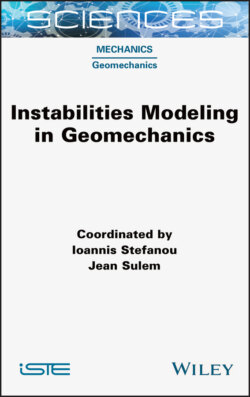Читать книгу Instabilities Modeling in Geomechanics - Jean Sulem - Страница 12
1.1. Introduction
ОглавлениеThe engineering practice in all branches of geomechanics is now at an interesting stage of development, when the customary tools of evaluation of the margin of safety, such as “admissible stress” and “factors of safety”, are felt to lead to an oversimplification of what we are capable of saying about a sample, soil/rock mass or structure. This is mainly because of the developed computational capabilities of contemporary engineering, as well as experimentally supported modeling capabilities, including coupled fields, through which soil and rock behavior is mathematically described. In the statement above I have adapted the words of Giulio Maier, with which he opens the foreword to a fascinating book by Davide Bigoni (2012) on bifurcation and material instabilities. While the book refers to bifurcations in a larger class of materials than just geomaterials, the above pronouncement catches the situation exactly: we can predict much more in detail than we could a few years ago: the stress field evolution, together with strain and/or damage progress along a process of loading following multiple scenarios of coupling with temperature; concentration of ions; salts or reaction progress field. It potentially includes patterns related to failure/instability and their precursors. However, how this information could/should be utilized to quantify “the distance from failure” or “factor of safety” (FOS) often remains an open question.
The purpose of this chapter is to provide an overview of a series of phenomena in geomechanics which qualify as instabilities/failures of various kinds. The use of this less-than-strictly defined term is intentional, as we want to encompass the widest possible class of phenomena for which the criteria are not necessarily within a single type of definition, but which correspond in loose terms to Lyapunov’s definition: an unlimited response to a limited solicitation. Solicitation refers to a trigger of any sort: mechanical, hydraulic, thermal or chemical. We shall start with classical phenomena associated with purely mechanical loading induced instabilities and their criteria and implications to expand into an array of non-classical multiphysics instability phenomena. Current observations and understanding of geomechanical processes indicate a critical role of non-mechanical variables, whereas the conceptual base is lagging behind. Material (local) and field (global) instabilities based on the actual instability events leading to failure are both discussed.
